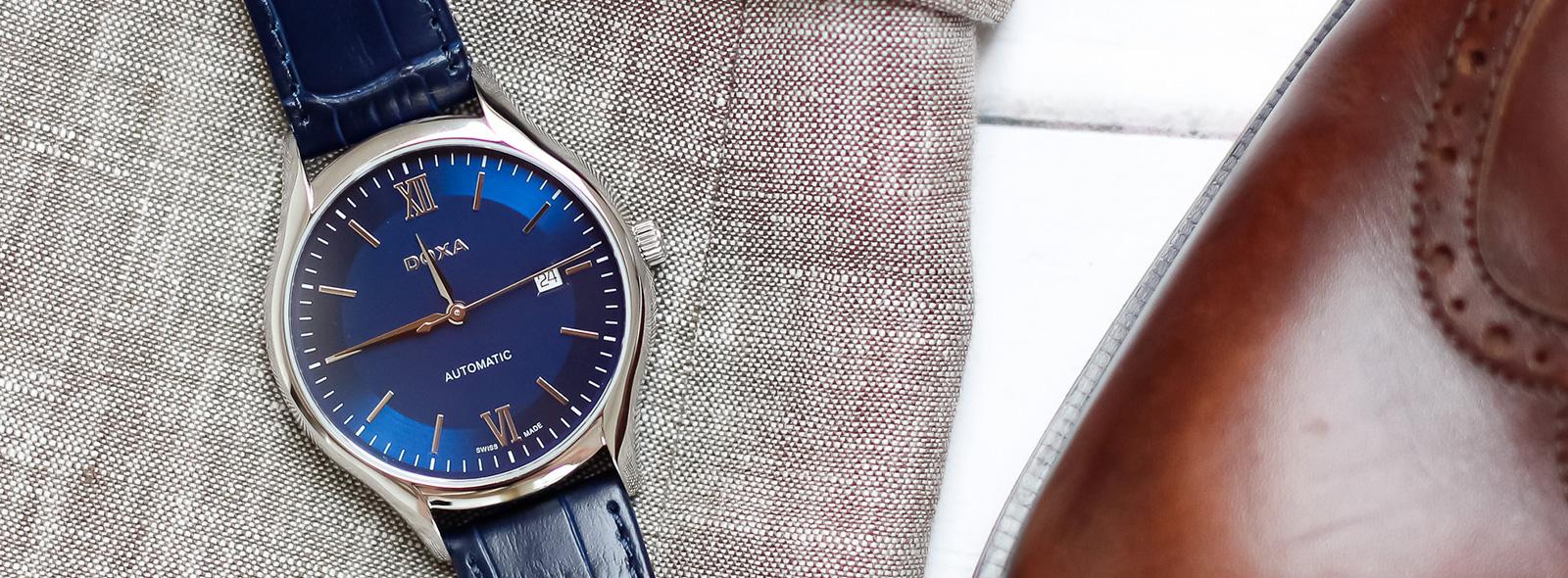
Watchmaking finishes

Various
Watchmaking finishes

Do you often wonder what watches are made of? What materials do manufacturers use to make unique timepieces? How do some brands manage to get the indelible colour of steel bracelets and cases? Keep on reading to find out about materials used to make watches, methods of applying colours, the coating of the steel elements and features of watch elements.
The type of material is relevant
More and more people decide to buy a watch with a bracelet and a steel case. Since it’s enough to choose the right colour, buying a watch seems to be a simple task. But did you know that a lot also depends on the materials used and the techniques of applying colours?

The most popular material used for bracelets and cases is 316L stainless steel (also known as surgical steel). It is used in medicine and piercing because of its high level of resistance to corrosion and almost 100% hypoallergenic properties. Surgical steel is also used in manufacturing medical devices, bone screws, silver sticks, surgical staples and other very useful instruments. Since surgical steel has practical use and aesthetic qualities, it is not surprising that it has become so popular in jewellery. What draws attention is its beautiful gloss. Polished surgical steel is a tasteful and unique decoration. Stainless steel is also less prone to blackening than silver or gold of low purity. That is why we can enjoy jewellery made of stainless steel for many years.
Other materials are also used in watchmaking. The table shows these materials, as well as their pros and cons.

Gold plating methods used in watches
There are plenty of materials used to make bracelets and cases. We have chosen, however, those materials which can be covered in any colour and finished in any way, e.g. stainless steel can be polished, brushed, matted or gilded. What we are most interested in, however, are gold plating methods (coating metal with a thin layer of gold) used in watches. There are several methods of gold plating: electroplating, IP, PVD, inlay and CNG.
Electroplating method
This method consists in applying an even layer of gold on a given metal when electrochemical machining. The emerging layer is often porous, which mainly depends on the texture of the metal. The electroplating method is not durable enough when it comes to watches. It is noteworthy that this method has similar properties as a watch made of gold, namely it is not very durable, it wears through quickly and is prone to scratches. That is why such a gold-plated watch should be properly cared for.
IP method
The second method of gold plating is IP, which stands for Ion Plating. This is one of the most popular PVD methods due to the combined application of more than one metal. The IP method consists in applying a golden powder mixed with another metal such as titanium on the surface of a case or bracelet. The advantage of this technique is that the gold layer is smooth and thus less prone to abrasion than the electroplating method.
PVD method
PVD is so far the most durable and willingly used method by such brands as Oris, Atlantic, Doxa or Epos. This method refers to gold plating or silver plating using PVD (Physical Vapour Deposition). The entire process of deposition of other metal oxides particles on a bracelet or case takes place in a vacuum chamber with a temperature of 400°C. In this way a smooth, non-corrosive and wear-resistant coating is created. The advantage of this coating is that it is harder than gold and much more durable than the IP or electroplating method. In addition, the properties of stainless steel are improved. Depending on its use, it can last from a few to several years.
Inlay method
Another gold plating method is inlay. It is rarely used and consists in inserting appropriate decorative pieces of materials made of gold in a specific place on the watch case. The thickness of the thinnest of the material used is 0.2 mm, i.e. it is 10 times thicker than electroplating. This type of gold plating is much more durable, but also much more expensive.
Buy watches on Watchard.com
On Watchard.com you will find watches made of stainless steel, ceramics, titanium and gold. There are plenty of models to choose from. Our offer includes only high-quality watches from authorized distributors.








